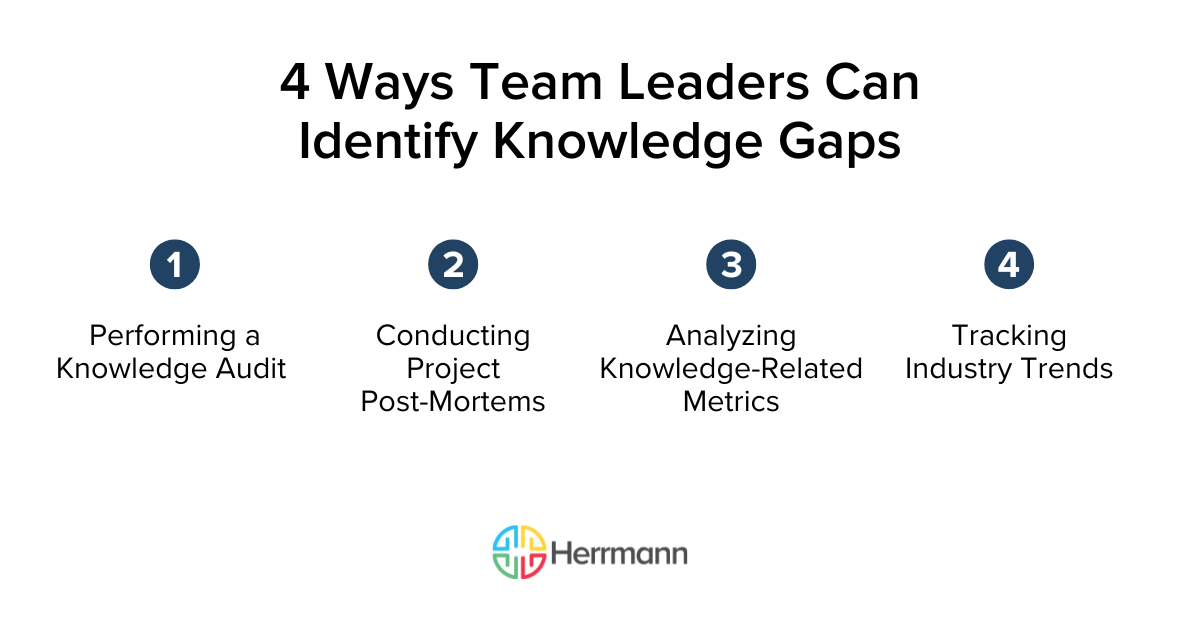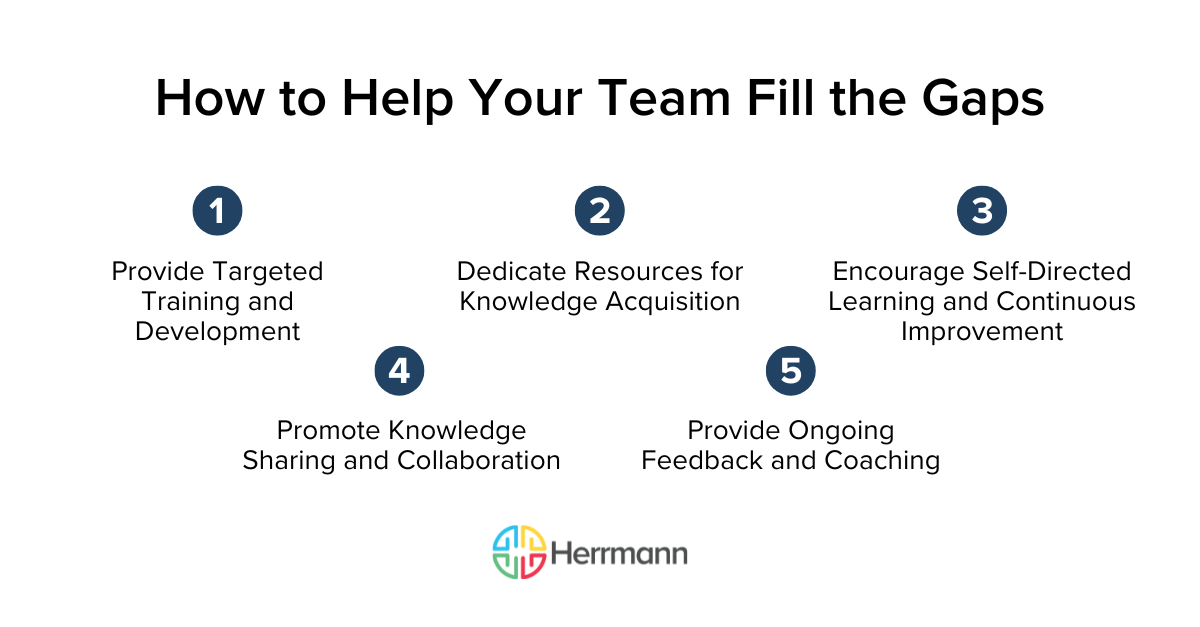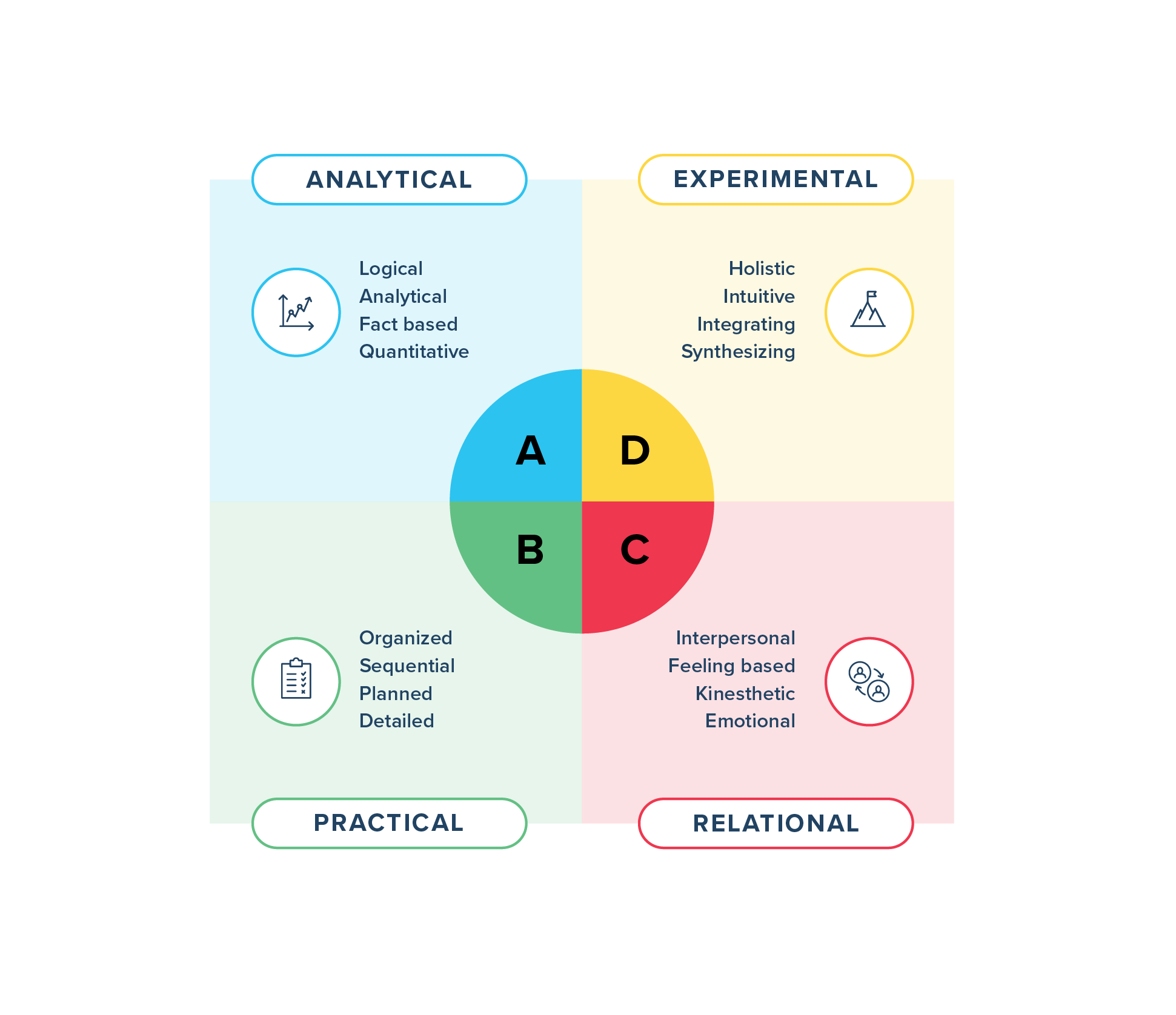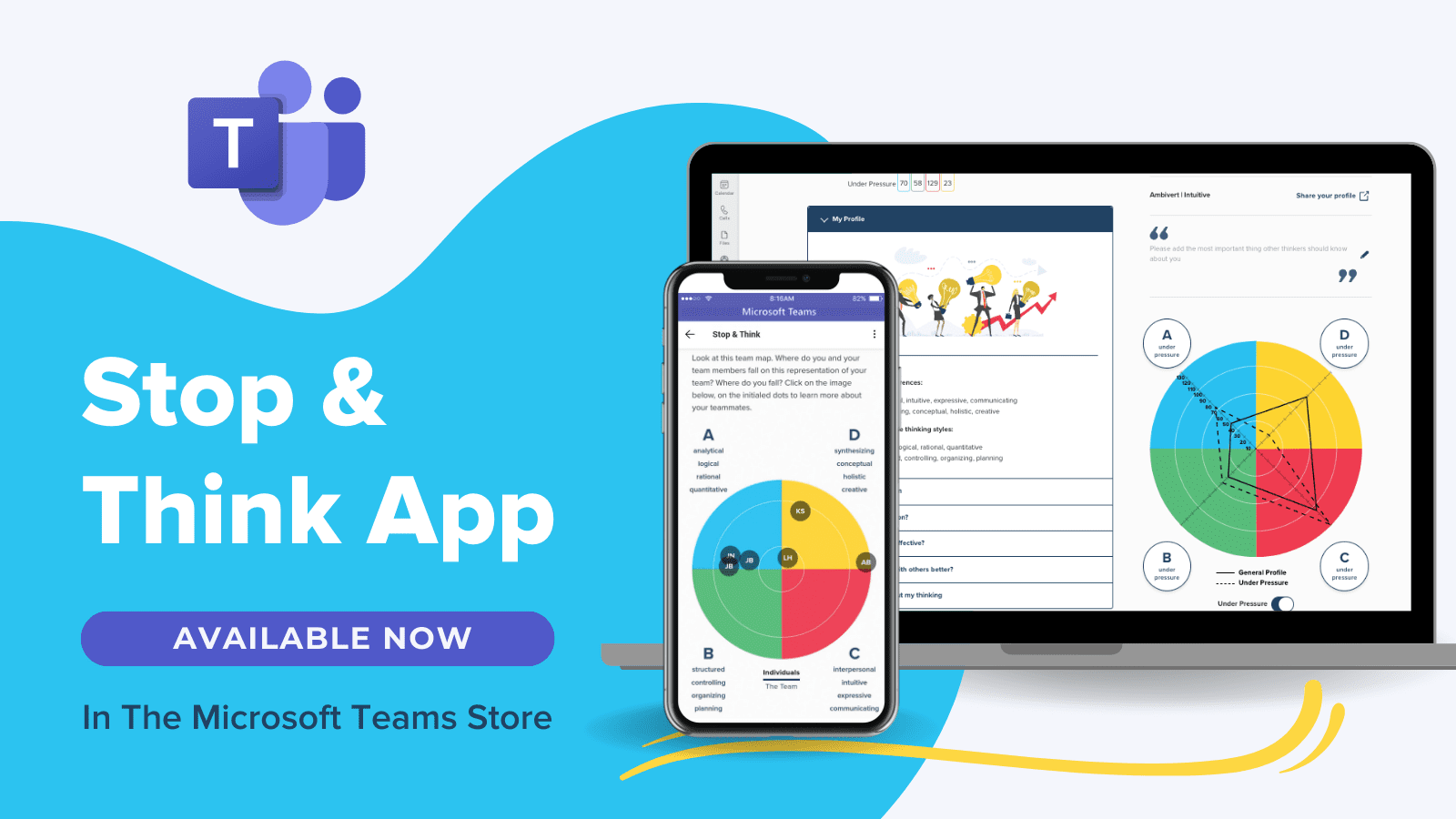Leading organizations are always looking to improve. They recognize that we live in a fast-evolving world where knowledge is constantly being updated or made obsolete. These companies need leaders who understand how to identify knowledge gaps in their teams — and how to fill them.
In 2019, IBM estimated that the half-life of workplace skills was only five years, on average — and less than 2.5 years for specialized skills, including those related to technology. With artificial intelligence taking hold in many industries, that half-life could shrink further.
While the shelf life of workplace skills shrinks, we’re left with the persistent challenge of filling knowledge gaps. In fact, closing the skills gap is impossible, argues marketing executive Kip Kelly. Even if you agree, don’t lose hope. The challenge for today’s leaders is to better understand their employees as people — how they think, how they learn, and what skills they need most to succeed now and in the future. With this knowledge, you can create professional development programs that encourage reskilling, upskilling, and continuous learning.
Learn more about workplace gaps in knowledge, including how to identify and address them effectively with the help of Whole Brain® Thinking.
What Are Knowledge Gaps?
Knowledge gaps in an organization are areas where individuals, teams, or organizations lack the necessary knowledge, skills, or understanding to perform a task effectively or achieve the desired outcome. These gaps can arise because of technological advancements, industry changes, or an employee taking on a new role or trying a task for the first time.
Knowledge gaps can arise anytime, but fortunately, employees can address them if they embrace adaptability and flexibility. Adaptive thinkers feel comfortable learning new things and operating in ambiguous situations. They have a growth mindset, believing that intelligence and abilities can be developed through effort, practice, and learning.
The Negative Impact of Unaddressed Knowledge Gaps
Knowledge gaps can be stressful for teams for many reasons. These gaps can slow down other team members who may have to cover assignments or fix mistakes. Clients or customers might be disappointed if they believe employees aren’t knowledgeable or can’t solve their problems. And those are just the gaps in knowledge leaders may detect. The knowledge gaps they aren’t aware of could silently be damaging productivity, employee morale, or the organization’s reputation.
Here are a few critical downsides to undiagnosed or unaddressed gaps in knowledge.
Poorer Team Performance
Productivity, quality, and competitiveness are all at risk when knowledge gaps go undiscovered or unaddressed. When team members lack the required expertise or understanding, they may struggle to complete tasks efficiently. They’ll make poor decisions based on incomplete or erroneous information. They might even attempt to fill in the gaps with assumptions and hope for the best.
Communication challenges can exacerbate this effect. Employees might hesitate to reveal their lack of knowledge for fear of reproach or might not even know who to ask or where to look for the information they need.
Team leaders face additional challenges in dealing with knowledge gaps within their teams. They may find it difficult to delegate tasks or assign responsibilities effectively if they are unsure of their team members' capabilities. At the team and organizational levels, knowledge gaps impair the speed of decision-making and make innovation more difficult. At worst, leaders mistakenly believe they have the proper knowledge and make incorrect decisions based on this faulty understanding.
Time Wasted on Reassigning or Redoing Work
Additionally, leaders may need to invest more time and effort in providing guidance, training, and support to bridge knowledge gaps, diverting their attention from other critical responsibilities. This can result because employees aren’t adequately trained, lack the requisite experience, or, in some cases, aren’t the right fit for the role.
For example, if a business fails to properly train its customer service agents on their products and common customer needs, those agents will struggle to provide accurate information to customers. This increases customer dissatisfaction, threatens retention, and pressures managers to fill the gaps. Instead of working on strategic issues, these managers spend a lot of time redoing the work of their front-line employees.
In deadline-focused job roles, this can result in work being hastily redone or corrected to avoid delays. Even if the deadline is met, there’s a greater chance of errors or oversight, resulting in rework, negative feedback, and even lost business.
Fewer Opportunities for Innovation
When knowledge gaps go undetected or unaddressed, teams will struggle to think critically, problem-solve effectively, and generate innovative ideas. One way this manifests is in limited perspectives — a team doesn’t understand alternative solutions or doesn’t think to look for them. Without a range of perspectives, innovation is impossible, and valuable possibilities go unnoticed or unexplored.
Missing knowledge can also make teams insecure, causing them to double down on their beliefs or direction. This resistance to change can hinder innovation and prevent the organization from adapting to evolving market conditions. Or, such teams might lose confidence in their abilities, refusing to take risks or try new things. This lack of confidence and engagement also contributes to a culture that resists innovation and stifles creativity.
Reduced Employee Engagement
Unaddressed knowledge gaps can contribute to employee disengagement and frustration. When individuals feel ill-equipped to perform their roles effectively, they become discouraged and stressed out. Meanwhile, top performers can become frustrated by what they perceive as a lack of urgency, innovation, and excellence, and they’ll also become dissatisfied and prone to turnover.
This loss of engagement affects individuals and can disrupt team dynamics and continuity, further contributing to information and skill gaps as institutional knowledge departs.

How Team Leaders Can Identify Knowledge Gaps
By understanding where individuals or teams lack the necessary knowledge or skills, leaders can develop targeted strategies to address these gaps. The first step is identifying knowledge gaps and understanding where they come from. Here are some methods for doing so.
Performing a Knowledge Audit
A knowledge audit is a systematic process that documents existing knowledge inside an organization, including knowledge specific to job roles, functions, and individuals. This knowledge audit also might involve a skills inventory, both of the existing workforce and of the skills required to achieve organizational goals.
Here’s how to perform a knowledge audit:
- Define team goals: Clearly define goals and objectives to help identify the specific knowledge and skills needed to achieve those aims.
- Identify key knowledge areas: Using the goals listed, map knowledge areas against those goals. These may include technical skills, industry-specific knowledge, intellectual property, or other areas.
- Assess current knowledge: Evaluate the knowledge and skills of each team member in relation to the identified key knowledge areas. This can be done through skills inventories, self-assessments, or performance evaluations. Also, look at existing documented knowledge, including project data, technical documentation, and best practices.
- Identify knowledge gaps: Compare the current knowledge of team members to the required knowledge for achieving team goals. Identify gaps or areas of opportunity.
- Develop a knowledge development plan: This could involve targeted training and development opportunities, assigning mentors or coaches, encouraging self-directed learning, or hiring specialized talent.
Conducting Project Post-Mortems
Post-mortems, or discussions following projects that assess the outcome and processes, are valuable opportunities to reflect on a team’s knowledge and identify areas for improvement. By analyzing the project's challenges and outcomes, team leaders can identify recurring knowledge gaps and proactively address them in future projects.
Analyzing Knowledge-Related Metrics
Data offers a wide-ranging, objective way of assessing knowledge within a team. Here are a few possible data points and metrics when looking for knowledge gaps:
- Learning program data: Review learning and development (L&D) programs for attendance, completion rates, and participant feedback. Once these knowledge needs have been examined, look for gaps where L&D programs aren’t helping employees grow.
- Knowledge management system usage: What knowledge is documented within the organization's various technology systems? How often is it accessed? Can employees quickly find what they’re looking for or easily make inquiries? Look for patterns that indicate low usage areas or frequent requests for specific information. These could highlight knowledge gaps or areas where information isn’t readily available.
- Patents and product development data: Look at what teams are creating or inventing for clues as to where knowledge is strongest — or where there might be a lack of innovation or a high number of unsuccessful projects.
Tracking Industry Trends
Staying updated on industry trends is crucial for identifying knowledge gaps that may arise because of technological advancements, changing market demands, or evolving best practices.
Look to trade associations, industry events, third-party trainers, and industry media to help see what’s coming around the bend. Customer-facing roles, such as an organization’s sales team, also can be a valuable source of industry intelligence.

How to Help Your Team Fill the Gaps
Knowledge gaps are inevitable, but what matters is what leaders do next. Here are several steps they can take to bolster their team’s knowledge.
Provide Targeted Training and Development
Some knowledge gaps are obvious and easily remedied by training, such as using a specific machine or teaching a sales technique. Training can include job shadowing, workshops, online courses, or certifications that focus on the relevant skills or knowledge. Tailor training to the individual's needs and experience to ensure maximum engagement and impact.
Dedicate Resources for Knowledge Acquisition
Employees respond to the priorities set by their leaders. Unless leaders allocate time and budget for knowledge acquisition, most employees won’t pursue it — and they might fear doing so if it distracts from named priorities.
Leaders can set aside dedicated learning sessions during work hours, pay for access to relevant learning materials or subscriptions, or offer funding for external training programs, among other options. By investing in their team's development, leaders show that knowledge gaps are a priority to solve.
Encourage Self-Directed Learning and Continuous Improvement
Employers must prioritize professional development. Still, they can also encourage employees to take ownership of their learning journey. Leaders can model a mindset of learning something new every day, acting as a trusted resource for questions about self-directed learning.
With the half-life of skills rapidly shrinking, employer-directed learning is unlikely to be enough. With support from their managers, employees will have to pursue learning for their own sake to keep up.
Promote Knowledge Sharing and Collaboration
Encourage knowledge sharing and collaboration among team members. Create opportunities for team members to share their expertise, insights, and best practices. This can be done through regular team meetings, cross-functional projects, or knowledge-sharing sessions.
Create a supportive environment where team members feel comfortable sharing their learning experiences and insights with others. Whenever such institutional knowledge can be documented for future use, encourage employees to do so.
Provide Ongoing Feedback and Coaching
Team leaders are on the front lines of the work, making them invaluable resources for helping employees gain knowledge and fill gaps.
Regularly provide feedback and coaching to team members to help them identify their strengths and areas for improvement. Offer constructive feedback that is specific and actionable for how those employees can fill their knowledge gaps. Offer mentorship or coaching opportunities to support their growth and development.

Using Whole Brain® Thinking to Fill Knowledge Gaps
Whole Brain® Thinking is a powerful methodology that provides a framework for understanding and leveraging how different people think. It recognizes that each person has unique thinking preferences and that tapping into the full range of these preferences can lead to better problem-solving, decision-making, and innovation.
The Whole Brain® Thinking Model is based on four quadrants, each representing a different thinking style:
- Analytical (Blue)
- Practical (Green)
- Relational (Red)
- Innovative (Yellow)
When teams better understand their thinking — and that of their teammates — they can improve their communication and view thinking differences as an avenue to new possibilities rather than as obstacles.
Here’s an example of a situation in which team leaders can address knowledge gaps with Whole Brain® Thinking in mind.
Consider a team that is transitioning to a new software system. There is a lot of business pressure to launch this software quickly and return to pre-installation productivity levels. Still, many team members have never worked with this type of system before, and they lack the necessary technical knowledge. Furthermore, some individuals lack confidence in their technical acumen and ability to learn new systems.
As a team leader, you’re trying to ensure the software is installed properly and that everyone receives onboarding training and appropriate levels of support after implementation. You want to keep employee morale and engagement high while getting everyone up to speed quickly so performance doesn’t suffer.
Consider the different thinking preferences within your team and how they might respond to the news about switching software systems. (Note that this example is somewhat simplified — many people have a strong preference for more than one quadrant, and everyone has the capacity to operate in any of the four quadrants or a combination thereof.)
Analytical Thinkers (Blue)
These logical and fact-focused employees may prefer to approach the knowledge gap by researching the technical specifications and functionalities of the new software. They may dive into manuals and documentation to gain a comprehensive understanding. They’ll likely be eager beta testers of the software, and they’ll focus on the expected business benefits. Conversely, if this software is actually bad for productivity and performance, they’ll quickly zero in on that negative.
Practical Thinkers (Green)
These organized, planning-oriented thinkers will want to know the transition timeline and the details about the change, what’s expected of them, and how training will be handled. They might benefit from practical training sessions, workshops, or simulations that allow them to interact with the software and apply their learning in real-world scenarios. A disorganized transition or a lack of expectation-setting will particularly affect Green thinkers.
Relational Thinkers (Red)
These thinkers focus on the human impact of the software, including the possible stress for employees who struggle. While they appreciate documentation, they also will want to know who will serve as in-house resources and advisers as the change happens. They’ll often be game for collaborative learning experiences, such as peer-to-peer training or knowledge-sharing sessions. A lack of communication will discourage them, as will leaders who dismiss the challenges involved.
Innovative Thinkers (Yellow)
These experimental thinkers may approach the knowledge gap by exploring creative solutions and alternative approaches to using the software. They may experiment with different features, explore unconventional uses, and find innovative ways to leverage the system's capabilities. Be sure to differentiate between required processes or steps, such as information security requirements, and areas where Yellow thinkers should look for innovative ways to use the software.
Knowledge Gaps Are Inevitable — and Addressable
Business and technology are evolving ever more rapidly, and the skills of yesteryear — or even a few years ago — are quickly losing their value. While team leaders can’t eliminate knowledge gaps, they can help their teams embrace continuous learning and improvement opportunities.
Whole Brain® Thinking can help by reinforcing the value of cognitive preferences and varied perspectives. No single person will have all the knowledge required for today’s workplace, but a team with complementary thinking preferences—who support and build on one another’s ideas—can solve almost any challenge they face.
Interested in how Whole Brain® Thinking can help your team? The HBDI® is a validated assessment of thinking preferences designed for business use. Learn about the HBDI®.












